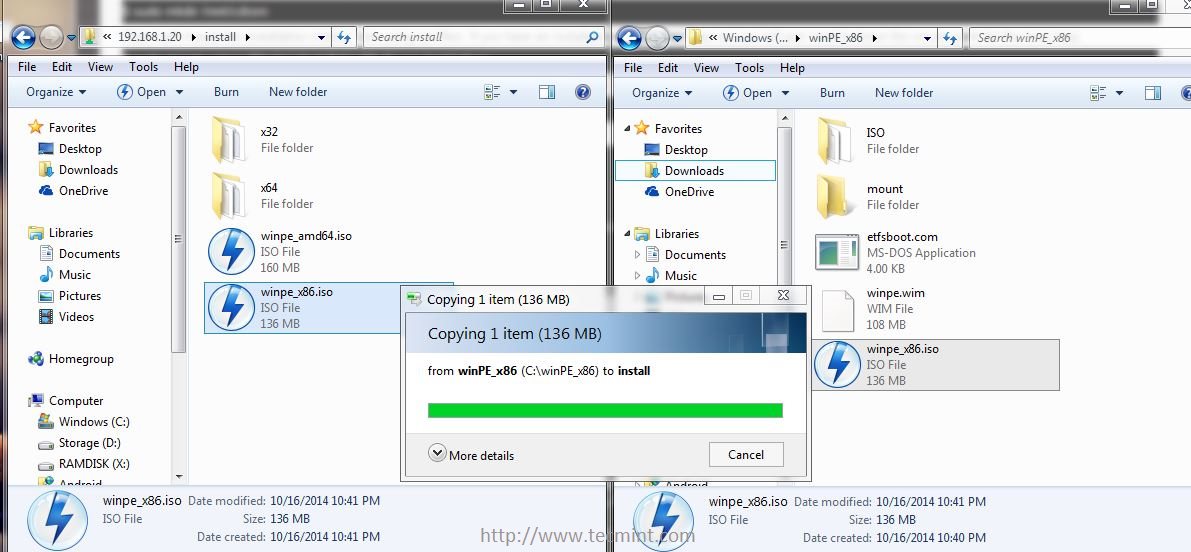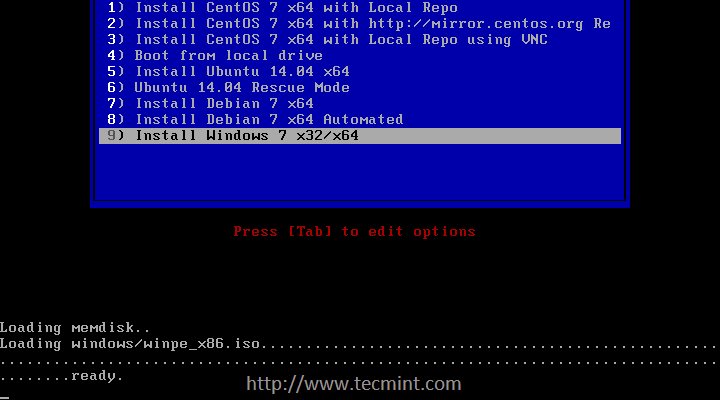76 - Quickly setup PXE booting to install any Windows OS or PXE boot linux, etc. 77 - Create a multiple partition, multi-boot USB Flash drive under Windows 78 - Run live XBMCbuntu from a multiboot USB drive. PXE boot of 18.04 ISO. Ask Question 9. 14.04 and 16.04, I simply loop-back mounted the full server DVD ISO so it was accessible via a web server, and set up PXE boot in the usual way (copied the kernel and initrd to tftp daemon, DHCP next-server option, pxe menu etc).
I have set up on my FreeBSD 10.3 PXE Boot server, using Syslinux. Boot via TFTP works fine, but via HTTP returns to PXE menu. Getting all files from browser works fine.
tftp folder:
What's wrong?Thanks to all in advance.
1 Answer
Let's consider that you are trying to boot BIOS clients
if your NBP is pxelinux.0 then you won't be able to use the HTTP capabilities. For HTTP and FTP transfers you must use lpxelinux.0 instead. The prepending 'l' stands for the use of the lwIP (lightweight IP) library.
Not the answer you're looking for? Browse other questions tagged apache-2.4httpfreebsdpxe-bootsyslinux or ask your own question.
Related Articles
- 1 Create Virtual Email Business Cards
- 2 Add VLAN to a VMware
- 3 Connect a TRENDnet Camera to an Apple Router
- 4 Assigning a NIC in VMware
VMware Workstation can perform a PXE boot over the local network, as version 4.5. PXE stands for “Pre-boot eXecution Environment” and is a standard developed by Intel to allow a device with PXE capabilities to load an operating system from a Local Area Network, or LAN, instead of an internal storage device, such as a hard drive or flash drive. A popular usage for PXE is for the rapid deployment of desktop and server systems within an enterprise. Set up a VMware Workstation virtual machine to attempt booting from PXE as its primary boot method.
1.Open the desired VMware virtual machine, or create a new virtual machine, if necessary.
3.Click 'Network Adapter.' Ensure the virtual machine's network settings are configured to use the same LAN as the PXE server. For example, if the PXE server is located on a physical device elsewhere on the LAN, as is usually the case, click 'Bridged' to enable the virtual machine to connect directly to the LAN instead of using the virtual LAN that is internal to VMware itself.
5.
Press the green 'Play' button to power on the virtual machine. A new virtual machine that has not yet had an operating system installed automatically attempts to locate a PXE server on the network. After an operating system has been installed to the virtual machine, it no longer attempts to perform a PXE boot upon startup. To perform a PXE boot every time the virtual machine is powered on, regardless of an installed operating system, proceed to the next step.
6.Press the 'F2' key immediately after powering on the virtual machine.
7.Press the right arrow key three times to enter the boot settings.
8.Press the down arrow key thee times to select the virtual network card.
9.Press the '+' key three times to set the virtual network card as the first boot device.
10.
Press the 'F10' key to save the setting. The virtual machine now attempts to boot from a PXE server as its primary method every time the virtual machine is powered on or restarted.
Tip

- While you can configure a virtual machine to attempt to boot from a PXE server, the process will fail if a PXE server does not exist on the LAN for which the virtual machine is connected to.
Resources (1)
Pxe Boot Iso Image
About the Author
Jedadiah Casey started writing professionally in 2007, with articles published in 'The Flagler Times' newspaper. He has more than 20 years of experience with computers and networking. Casey holds a Bachelor of Science in information systems from the University of Central Florida, as well as professional industry certifications.
Cite this Article